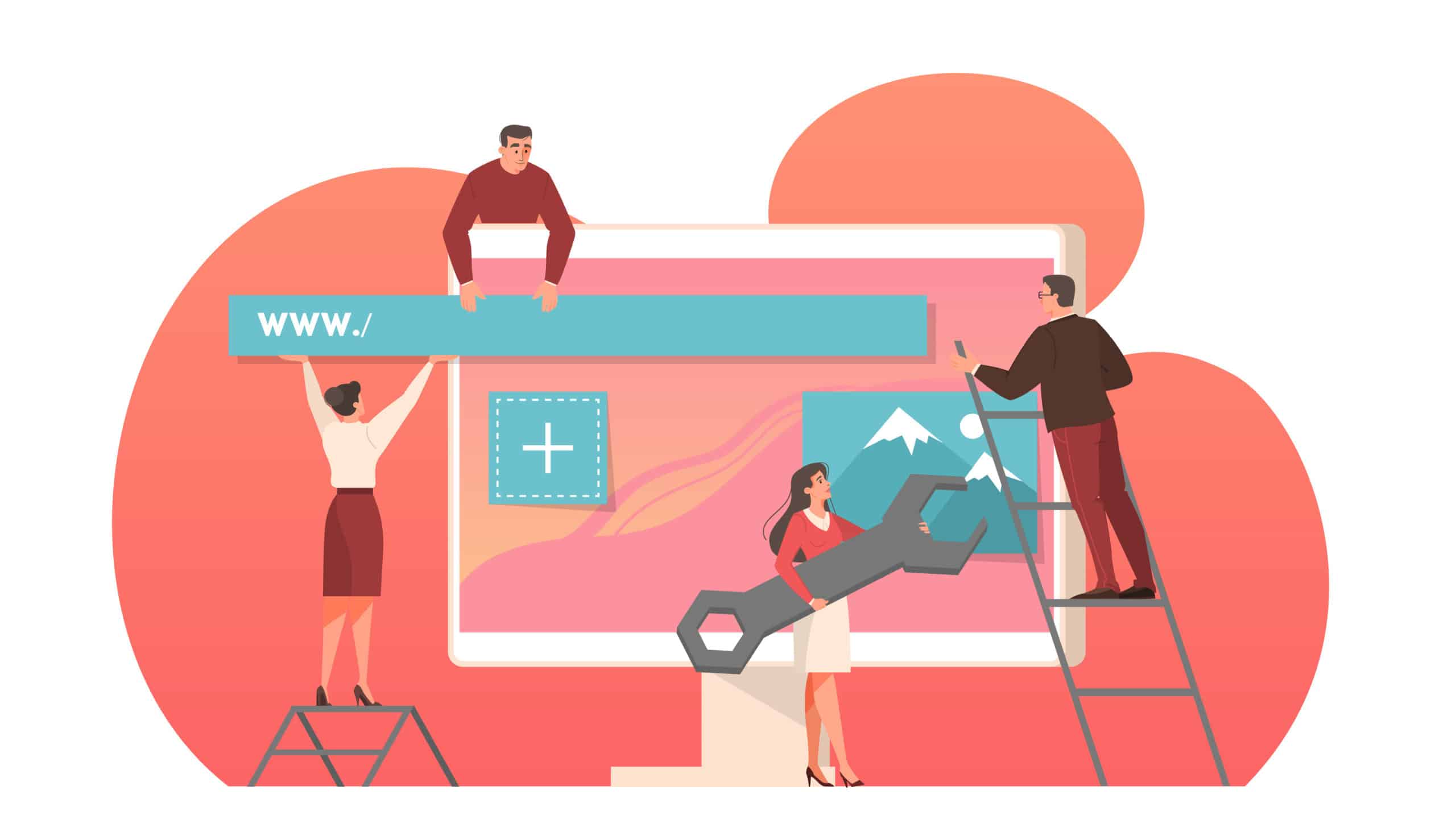Over the years, Google has provided an abundance of tools and metrics aimed to optimize search engine results and user experience — in fact, there is so much available that it can be a challenge to keep up. Fortunately for marketers, developers, and website owners, Google’s latest algorithm update aims to help websites focus on metrics that matter the most: the Core Web Vitals.
In 2020, Google announced the Core Web Vitals, a set of real-world, user-centered metrics that quantify key aspects of a website’s user experience through three main features: Largest Contentful Paint (page loading speed), First Input Delay (interactivity or responsiveness), and Cumulative Layout Shift (visual stability). They are the subset of Web Vitals, an initiative by Google to provide unified guidance for quality signals. They are essential to delivering an optimized user experience across the web. Simply put, Google will reward sites for improving visual and interactive experiences for online users.
Although Google includes other Search signals for page experience, such as mobile-friendliness, safe browsing, HTTPS security, and no intrusive interstitials, it is believed that the top three performance metrics under the Core Web Vitals provide a holistic, qualitative picture of a user’s experience on a specific web page. Adherence to Core Web Vitals will impact how businesses acquire site users and, in the case of retailers, how B2B businesses or e-commerce brands convert these site users to buyers.
By no means does a good page experience override having great content on a website, but it does provide a competitive advantage. With page experience used as a definite search ranking signal moving forward, improving web performance, and optimizing rich media plays an even more vital role in business success.
Here is what you should know about each metric feature:
Largest Contentful Paint (LCP)
Largest Contentful Paint measures the loading time for a page’s main content. This includes the largest image or text block visible within a user’s viewpoint. To provide an optimized user experience, the LCP threshold should be less than 2.5 seconds. An LCP of 4.0 seconds or higher is considered poor. Factors that hurt LCP include slow server response time, Java and CSS that blocks rendering, slow loading resources (especially image and video files), and client-side rendering.
First Input Display (FID)
First Input Display measures interactivity. This is the time it takes for a page to respond to user input including when a user clicks on a dropdown menu, engages with a video, or fills out a form. Pages should have an FID of 100 milliseconds (ms) or less. Interactivity between 100 ms and 300 ms needs improvement, and above 300 ms is considered poor.
Cumulative Layout Shift (CLS)
Page stability, especially on mobile devices, is another element of user experience that can cause someone to bounce from a site. CLS measures visual stability or any unexpected shift of visual page content as that content loads on the screen. Pages should maintain a CLS score of 0.1 or less. Anything between 0.1 and 0.25 needs improvement and anything above 0.25 is considered poor.
Why Are These Changes Necessary?
Without a doubt, consumers expect fast page loading times. In fact, 47% of consumers expect a web page to load in 2 seconds or less. Even a one-second delay in page response can result in a 7% reduction in conversions. How does this relate to Core Web Vitals?
Google found that if e-commerce sites meet all three Core Web Vital metrics, consumers were 24% less likely to abandon the page. Likewise, if page-load time increased from just one second to three seconds, the probability of the bounce rate increased by 32%.
Understanding the metrics is the first step, implementing it and knowing what might be slowing down a webpage is next. Something that Google has brought to light is that site owners might not be considering page weight.
The search engine found in 2018 that 79% of pages were over 1MB, 53% over 2MB, and 23% over 4MG. Although the data is a bit dated, it highlights the issue that with an increase in content, webpages are holding onto a lot more data, and as a result, are loading a lot slower. Even HTTP Archive has noted an 85% rise in online page weight over the last few years, finding that for websites in the 90th percentile, three-fourths of that page weight is made up of photos, graphics, and video. Visual media is a compelling storyteller, but its impact may be a deterrent to a great user experience.
Media optimization will have a direct impact on load time, aka LCP. Remember the optimal threshold for LCP being less than 2.5 seconds? Currently, 47% of websites have an LCP score greater than 2.5 seconds.
If changes have not been made to the backend of a website already, then the time to act is now. Although Google previously announced for the Core Web Vitals to go live in May 2021, the algorithm updates gradually rolled out mid-June 2021 with a full rollout expected by the end of August 2021.
Websites that fall into the ‘Needs Improvement’ or ‘Poor’ windows of measurement should consider their on-page SEO (Search Engine Optimization) efforts. Otherwise, they will likely decrease if they have a lower Core Web Vitals score. Not only that, but they would also be working against themselves, investing more in paid search initiatives that the site is actively working against.
For non-web developers, this may seem like a challenge but there are some simple solutions, such as compressing images and text to take up less bandwidth which can be a game-changer. Converting images into newer formats such as AVIF, JPEG 2000, JEPG XL, and WebP can also help lower LCP. Google’s analysis shows that 25% of pages could save more than 250KB and 10% can save more than 1MB that way.
That’s not to forget about quality, however. To LCP metric standards, rich media needs to load as fast as possible, but images also need to be optimized in a way to positively impact the user experience. In essence, there needs to be a balance between the file size of an image and its visual fidelity.
Since the switch to Core Web Vitals and its role in SEO is already upon us, how immediate the impact will be observable is somewhat unknown. However, as the rollout progresses, Google has already expressed they will be fine-tuning the metrics more frequently as they collect user data related to the Core Web Vitals, and have even hinted at security, privacy, and accessibility to be taken into consideration for search rankings down the road.




